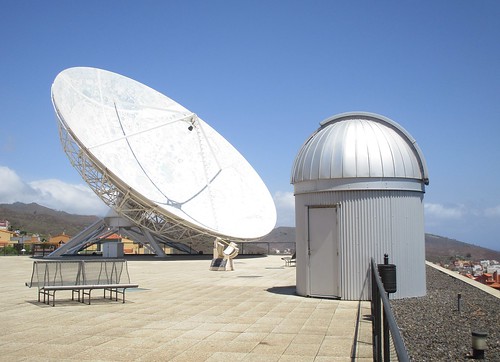
How could I mislay Earth so soon after my descent into the Museum of Science & The Cosmos? Jupiter and Saturn loomed large above me but it took a full minutes scan to see my pea sized world dangling and dwarfed light years away.

Myth busting, eye opening, and full of eureka moments, myself and two other visitors enjoyed a free guided tour of a selection of over 40 exhibits in the university city of La Laguna in Tenerife. The spread of knowledge was temporarily limited by the Covid virus but interaction and hands on discovery were still the key. An eager cleaner followed in our wake to buff up outer space portals, helium balloons, and revealing light shows.

Discovery, explanation, and even naming of heavenly objects, owes much to scientist Charles Piazza Smyth, Italy born but educated in Edinburgh on the way to becoming Astronomer Royal for Scotland. Pioneering star gazing in Tenerife in 1856, his legacy can be seen in the museum in features on the La Palma and Tenerife based telescopes. Meteor and weather phenomenon were all given their stage in the building, and a step in booth gave a close encounter with a tornado. Light spectrums picked out our body heat at close range, and I even managed to lift a mini car – with help from Archimedes.

Up on the roof plaza, a telescope, a stone solar calendar, and a huge satellite dish were awaiting the resumption of school parties and night gazing sessions. It´s a busy high tech point on the island, with the Santa Cruz -La Laguna trams stopping outside, and planes swooping to land at Tenerife north airport.

When our own world returns to a less crazy spin, the small entrance fees (5 euros for non residents) will also return for over 100 people at a time, along with extended time slots to explore the wonders of the museum. Check out the website to exploit the current free tours, and to get more information in a choice of languages, and you too can get a grip on the cosmos.